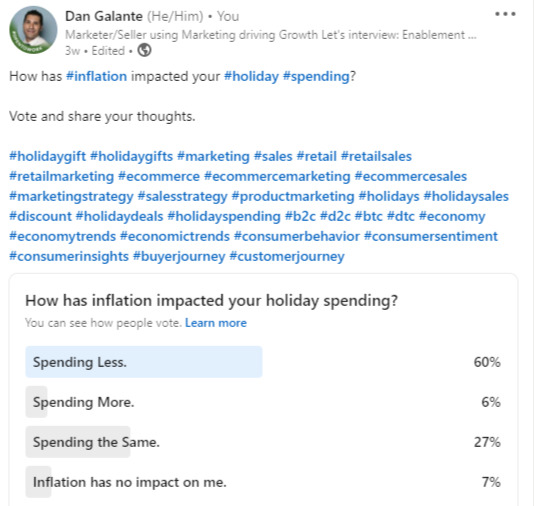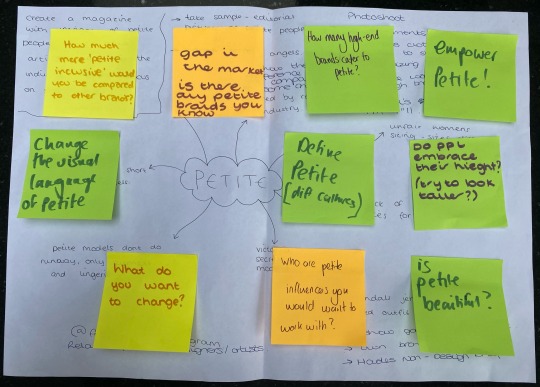#the difference in price is $3 . if that impacts your vote
Explore tagged Tumblr posts
Text
pros to seeing it tonight: opening weekend, not doing anything else today, will have more time this weekend to work on other stuff with deadlines
cons: paying full price for a movie ticket instead of matinee prices 😔
#personal#i wanna seeeee it. i should probably just wait but...i have the Option#the difference in price is $3 . if that impacts your vote
33 notes
·
View notes
Text
The price of electricity is set to come down again after a recent spike in costs, tabloid Iltalehti (IL) reports on Friday morning.
The country witnessed record-breaking electricity prices last week due to supply disruptions and tranquil weather conditions, with Monday recording rates as high as 68 cents per kilowatt-hour (kWh).
The suspension of electricity production at the Olkiluoto 2 nuclear power plant and the restrictions on transmission between Finland and Sweden significantly impacted pricing, IL notes.
While restrictions on electricity transmission from Sweden will persist until mid-September, repairs between southern Finland and central Sweden have been successfully completed, and the Olkiluoto 2 plant is projected to resume power generation on 4 September.
Furthermore, this week saw increased wind activity, contributing to an optimistic price outlook for the coming weeks, IL added.
Fingrid Power Manager Maarit Uusitalo says a similar optimism extends to the upcoming winter.
Electricity import restrictions will not be in place for the winter season, and Finland's own electricity production is better positioned compared to the previous winter thanks to the activation of Olkiluoto 3 and the addition of 1,000 MW of wind power.
In addition, European gas, nuclear and hydropower reserves are in a much better state compared to last winter, according to Uusitalo.
"We believe that the situation this winter will differ significantly from the previous winter," she told Iltalehti.
Who will replace Sanna Marin?
Helsingin Sanomat reports that the Social Democratic Party (SDP) will be meeting in Jyväskylä over this coming weekend for a party congress and to select the leader who will guide the party for at least the next three years.
The party organised a members' consultative vote, for the first time, to determine the new party chair. Voting closed on 25 August.
Antti Lindtman, the leader of the party's parliamentary group, is widely regarded as the frontrunner in the race, as reported by HS. He faces only one challenger, former health minister Krista Kiuru.
Current leader Sanna Marin's successor will be unveiled on Friday evening and the new chair is scheduled to deliver a policy speech on Sunday afternoon.
Marin is also set to speak to the party faithful on Friday afternoon. She had previously announced her decision not to seek re-election as SDP chair following the April election. The former Prime Minister will remain an MP and has signed on with the Harry Walker Agency, a US-based speaking engagement firm.
Tax winners and losers
Around 1.2 million people in Finland are expected to receive their tax refunds on Monday, Tampere-based Aamulehti writes.
In total, the Tax Administration will distribute a little over 1.1 billion euros in refunds during the month of September.
"If you don't see your tax refund in your account first thing in the morning, please check your account balance again in the afternoon. If the money still hasn't appeared, it's possible that the tax refund payment date has been postponed," the authority's Chief Inspector Juha Villman says in a release.
Meanwhile, Friday marks the deadline for back taxes. Around 333,000 taxpayers are due to settle a total sum of 260 million euros.
2 notes
·
View notes
Text
Benefits of Joining a State Cooperative Union: Key Insights

Cooperative unions play an essential role in promoting economic growth and social stability in communities. Here's a breakdown of the key benefits of joining a state cooperative union.
What is a State Cooperative Union?
A state cooperative union is an organization that brings together various cooperatives within a state to work toward common goals.
The union helps cooperatives share resources, expertise, and support to improve the overall welfare of its members.
Members can include farmers, small business owners, and individuals seeking financial security.
Key Benefits of Joining a State Cooperative Union
1. Access to Collective Bargaining Power
Gain a stronger voice through collective bargaining with other cooperatives.
Negotiate better prices for agricultural products, bulk goods, and services.
Secure better loan interest rates or discounts on products for cooperative members.
2. Improved Financial Security
Access savings accounts, loans, and insurance policies at lower rates than traditional financial institutions.
Pool resources with other members for better financial products and greater stability.
Take advantage of discounted goods and services that can save money over time.
3. Support for Local Communities
Reinvest profits back into local projects and initiatives like schools, healthcare facilities, and infrastructure improvements.
Support local businesses and contribute to your community's economic development.
Cooperatives often create more job opportunities and encourage sustainable practices in the region.
4. Access to Education and Training
Take part in educational programs and training sessions offered by the cooperative union.
Learn new skills and improve your business practices, such as sustainable farming or financial literacy.
Participate in workshops that help you stay updated on industry trends and technologies.
5. Strengthened Community and Networking Opportunities
Connect with like-minded individuals who share common goals and values.
Collaborate and exchange ideas with fellow members to support mutual growth.
Build a network that can lead to new business partnerships and opportunities.
6. Democratic Control and Ownership
Participate in decision-making processes, as every member has an equal say, regardless of investment size.
Vote on important matters affecting the cooperative union and its direction.
Enjoy a sense of ownership and responsibility for the success of the union.
7. Social Impact and Community Development
Contribute to social responsibility efforts such as poverty alleviation, sustainability, and social justice.
Support initiatives that address environmental issues and promote social equity.
Be part of a community-focused organization that strives to create positive social change.
How to Get Started with a State Cooperative Union
Research various cooperative unions available in your state and explore their services.
Check the membership requirements, benefits, and resources offered by each union.
Fill out an application and pay a membership fee (typically small) to become a member.
Once you’re a member, begin enjoying the benefits of collective resources, support, and educational opportunities.
Joining a state cooperative union offers financial security, social impact, and a sense of community. It provides collective bargaining power, educational resources, and networking opportunities. If you’re seeking to improve your financial situation, support your community, and make a positive difference, consider becoming a member of a state cooperative union today.
0 notes
Text
Investing in Mutual Funds vs Stocks: Which is Right for You?
When it comes to building wealth and planning for the future, two of the most popular options are investing in mutual funds and investing in the stock market directly. Both have their own merits, risks, and strategies. Choosing between the two depends on your financial goals, risk tolerance, and knowledge of the markets.
In this article, we'll dive into the differences between investing in mutual funds vs stocks, and help you decide which approach aligns best with your investment profile.
Understanding the Basics
Before we compare, it’s important to understand what mutual funds and stocks are.
What are Stocks?
When you invest in a stock, you're buying a share in a company. You become a partial owner and can earn money through price appreciation or dividends. Investing in stock market means picking individual companies you believe will perform well over time.
What are Mutual Funds?
Mutual funds pool money from multiple investors to invest in a diversified portfolio of assets like stocks, bonds, or other securities. A professional fund manager oversees these investments. When you buy a mutual fund, you're indirectly investing in a variety of securities, reducing your individual exposure to any single one.
Investing in Mutual Funds vs Stocks: Key Differences
Here’s a head-to-head breakdown of investing in mutual funds vs stocks:
1. Risk and Reward
Stocks: High risk, high reward. Individual stock prices can fluctuate dramatically based on market sentiment, company performance, and external factors.
Mutual Funds: Generally lower risk due to diversification. Since mutual funds invest in multiple securities, poor performance by one may be offset by gains in another.
2. Control Over Investments
Stocks: You have full control. You choose which companies to invest in, when to buy, and when to sell.
Mutual Funds: The fund manager makes investment decisions. You’re relying on their expertise and strategy.
3. Time Commitment and Expertise
Stocks: Requires time, market knowledge, and continuous monitoring. Great for active investors who enjoy researching and analyzing companies.
Mutual Funds: Ideal for passive investors. You don’t need to track the market daily; the fund manager does that for you.
4. Diversification
Stocks: You need to buy multiple stocks to achieve diversification, which may require more capital.
Mutual Funds: Built-in diversification. Your money is automatically spread across different assets.
5. Costs and Fees
Stocks: Low transaction fees with most online brokers. However, frequent trading can add up.
Mutual Funds: Often come with expense ratios, management fees, and sometimes exit loads. These costs can eat into returns over time.
Benefits of Investing in Mutual Funds
Diversified Portfolio: Reduces the impact of a poor-performing asset.
Professional Management: Experts handle the research, asset allocation, and timing.
Convenience: Ideal for beginners or those without time to monitor markets.
Systematic Investment Plans (SIPs): Allows disciplined investing with small amounts regularly.
Benefits of Investing in Stock Market Directly
Higher Return Potential: If you choose the right stocks, returns can significantly exceed mutual fund averages.
Ownership and Voting Rights: As a shareholder, you have a stake in the company and may receive voting rights.
Real-Time Control: You can make decisions instantly, based on news or technical analysis.
Tax Efficiency: Long-term capital gains on stocks can be more tax-efficient compared to mutual fund distributions.
Which One Should You Choose?
The decision between investing in mutual funds vs stocks comes down to your investment style, financial knowledge, and risk appetite.
Choose mutual funds if:
You're new to investing.
You prefer a hands-off approach.
You want diversification without buying multiple stocks.
You value professional management.
Choose stocks if:
You’re financially literate and enjoy market analysis.
You’re seeking higher returns and are comfortable with higher risk.
You want full control over your portfolio.
You can also do both. Many experienced investors combine investing in mutual funds for core diversification and investing in stock market for aggressive growth or niche plays.
Final Thoughts
Both investing in mutual funds and investing in stock market directly offer excellent avenues for wealth creation. While mutual funds provide diversification and expert management, stocks offer greater potential for high returns and more control. Understanding your financial goals, risk tolerance, and time commitment is key to making the right choice.
There’s no one-size-fits-all answer. The best strategy is one that aligns with your financial journey and helps you stay consistent over time. Whether you lean toward mutual funds, individual stocks, or a mix of both—just start investing early and stay disciplined.
0 notes
Text
Buy Tech Backlinks

If you’re aiming to increase your website’s visibility, improve your search engine rankings, and drive more traffic to your site, buying tech backlinks can be a strategic step in the right direction. Backlinks are a critical component of SEO, and for tech websites, tech-specific backlinks can make all the difference in your online presence. In this guide, we'll dive into the benefits of tech backlinks, why buying them might be worth considering, and how to do it effectively.
What Are Tech Backlinks?
Backlinks, also known as inbound or incoming links, are links from other websites that lead to your own. When credible websites link to your tech content, search engines view this as a vote of confidence in your site’s quality and relevance. Specifically, tech backlinks come from reputable tech-related sites, blogs, or forums and target audiences with an interest in tech topics.
These niche backlinks hold more weight for search engines in the context of tech-related search queries. For example, if your site reviews gadgets or publishes tech tutorials, a backlink from a popular technology blog can significantly boost your authority.
Why Are Tech Backlinks Important?
Higher Search Rankings: Google’s algorithm considers the quality and relevance of backlinks as a ranking factor. Having backlinks from well-regarded tech sites signals to Google that your content is trustworthy, potentially boosting your rankings in search results.
Increased Traffic: A backlink from a high-traffic tech site can bring a steady stream of visitors who are genuinely interested in your niche. This targeted traffic can lead to higher engagement, more subscriptions, and increased sales.
Enhanced Authority and Credibility: Backlinks from established tech websites can improve your brand's reputation and authority in your niche. When readers see that credible sites link to your content, they’re more likely to trust and engage with your brand.
SEO Impact for Niche Audiences: With tech-specific backlinks, you’re appealing directly to a niche audience. This means you’re more likely to attract visitors who are looking specifically for the kind of tech-related content you provide.
Benefits of Buying Tech Backlinks
Building backlinks naturally takes time. That’s where buying tech backlinks can be beneficial for brands looking to expedite their growth.
Time Efficiency: Building high-quality links organically is a long-term effort. By buying backlinks, you speed up the process and see results faster.
Better Control over Quality: Reputable tech backlink providers ensure the links come from trustworthy, high-domain authority sites. This ensures your site isn’t associated with spammy sources, protecting your SEO health.
Improved Relevance: Buying tech backlinks allows you to target specific tech-related sites and pages relevant to your niche. This ensures that you attract not only quantity but also quality in terms of visitors.
Scalable Growth: With the right budget, you can rapidly expand your backlink profile, which is essential for competing with more established tech sites.
How to Buy Tech Backlinks Safely and Effectively
Buying backlinks requires careful consideration. Here’s a guide to ensure you get the most out of your investment:
1. Choose a Reputable Backlink Provider
Not all backlink providers are created equal. Look for companies with verified testimonials, transparent pricing, and a good reputation in the SEO community. Be wary of providers promising hundreds of links for extremely low prices – quality should always be the priority.
2. Prioritise Domain Authority and Relevance
Focus on purchasing backlinks from sites with high domain authority and relevance to the tech industry. Tools like Ahrefs and Moz can help you analyse a site’s authority, making it easier to choose sites that will positively impact your ranking.
3. Avoid Spammy or Low-Quality Links
Google’s algorithm is smart enough to detect low-quality or spammy links, which can actually hurt your ranking. Avoid providers who place your links in irrelevant, low-traffic, or non-tech-related sites.
4. Aim for Contextual, In-Content Links
In-content backlinks—those that appear naturally within the text of an article or blog post—are generally more valuable than sidebar or footer links. Look for providers that offer links embedded within relevant content that aligns with your tech site.
5. Diversify Your Backlink Profile
Avoid relying on links from a single source. Google favours a natural backlink profile that includes a variety of websites and link types. Consider buying a mix of backlinks from tech blogs, forums, and even tech directories for a more organic-looking profile.
6. Track Your Results
Use tools like Google Analytics and Ahrefs to monitor your backlink performance. Track metrics such as referral traffic, keyword rankings, and domain authority to gauge the effectiveness of your purchased tech backlinks.
Alternatives to Buying Tech Backlinks
While buying tech backlinks can provide quick results, it’s also beneficial to focus on natural backlink strategies. Here are a few tips to balance your SEO approach:
Guest Blogging: Reach out to tech sites for guest blogging opportunities where you can contribute valuable content in exchange for a backlink.
Creating Shareable Content: Infographics, research studies, and comprehensive tech guides are more likely to be linked to organically by other sites.
Influencer Outreach: Partner with tech influencers to have them share your content, which can lead to organic backlinks and a larger audience reach.
0 notes
Text
Stock Trading for Beginners: A Comprehensive Guide
Introduction to Stock Trading
Stock trading can be an exciting and profitable venture if approached with the right knowledge and strategy. Whether you're looking to grow your wealth, diversify your investment portfolio, or take advantage of market opportunities, understanding the basics of stock trading is essential. This guide will walk you through the key concepts, steps, and strategies to help you get started on your stock trading journey.
What is Stock Trading?
Stock trading involves buying and selling shares of publicly traded companies with the goal of making a profit. When you buy a stock, you own a piece of that company and have a claim on its assets and earnings. Stocks are traded on stock exchanges such as the New York Stock Exchange (NYSE) and the Nasdaq. stock trading for beginners
Key Concepts for Beginners
1. Types of Stocks
Common Stocks: These represent ownership in a company and entitle shareholders to vote on corporate matters and receive dividends.
Preferred Stocks: These offer fixed dividends and have priority over common stocks in the event of liquidation, but typically do not come with voting rights.
2. Stock Market Basics
Bull Market: A market condition where stock prices are rising.
Bear Market: A market condition where stock prices are falling.
Volatility: The degree of variation in stock prices over a period of time.
3. How the Stock Market Works
Stocks are traded on exchanges, and their prices are determined by supply and demand. When more people want to buy a stock than sell it, the price goes up. Conversely, when more people want to sell a stock than buy it, the price goes down.
Steps to Start Stock Trading
1. Educate Yourself
Before diving into stock trading, it's crucial to educate yourself about the market. There are numerous resources available, including books, online courses, and financial news websites.
2. Choose a Reliable Brokerage
A brokerage acts as a middleman between you and the stock exchange. Choose a brokerage that offers a user-friendly platform, low fees, and excellent customer support. Some popular options include:
E*TRADE
TD Ameritrade
Robinhood
3. Create a Trading Plan
A trading plan helps you stay disciplined and make informed decisions. Your plan should include:
Investment Goals: Define what you aim to achieve with your investments.
Risk Tolerance: Determine how much risk you are willing to take.
Budget: Decide how much money you can afford to invest.
4. Start with Paper Trading
Paper trading allows you to practice trading without risking real money. Most brokerages offer paper trading accounts where you can simulate trades and test your strategies.
5. Fund Your Account
Once you're comfortable with paper trading, you can fund your brokerage account with real money. Start with an amount you are willing to risk.
6. Make Your First Trade
Use the knowledge and strategies you've learned to make your first trade. Monitor the market, analyze stock performance, and execute trades based on your trading plan.
Strategies for Successful Stock Trading
1. Fundamental Analysis
Fundamental analysis involves evaluating a company's financial health and performance. Key factors to consider include:
Earnings Reports: Analyze quarterly and annual earnings reports.
Revenue Growth: Look for companies with consistent revenue growth.
Debt Levels: Check the company's debt-to-equity ratio.
2. Technical Analysis
Technical analysis focuses on studying price patterns and market trends. Key tools and indicators include:
Moving Averages: Track the average price of a stock over a specific period.
Relative Strength Index (RSI): Measure the speed and change of price movements.
Candlestick Charts: Visualize stock price movements over time.
3. Diversification
Diversification involves spreading your investments across different stocks and sectors to minimize risk. By diversifying, you reduce the impact of a poor-performing stock on your overall portfolio.
4. Stay Informed
Stay updated on market news, economic indicators, and company announcements. This information can help you make informed trading decisions and identify potential opportunities.
Common Mistakes to Avoid
1. Emotional Trading
Avoid making impulsive decisions based on emotions. Stick to your trading plan and make decisions based on analysis and strategy.
2. Lack of Research
Failing to research stocks thoroughly can lead to poor investment choices. Always conduct comprehensive research before making any trades.
3. Overtrading
Trading too frequently can lead to high transaction costs and potential losses. Be patient and wait for the right opportunities.
4. Ignoring Risk Management
Always have a risk management strategy in place. Set stop-loss orders to limit potential losses and protect your capital.
Conclusion
Stock trading for beginners can be both rewarding and challenging. By educating yourself, choosing a reliable brokerage, creating a trading plan, and implementing sound strategies, you can increase your chances of success. Remember to stay disciplined, manage risks, and continuously learn from your experiences. Happy trading!
for more visit https://financialtexture.com/

0 notes
Text
A Comprehensive Guide to the Potential of Stock Market Investment
https://ciolookleaders.com/wp-content/uploads/2024/05/1-A-Comprehensive-Guide-to-the-Potential-of-Stock-Market-Investment-1.jpg
In today’s ever-evolving financial landscape, stock market investment remains one of the most potent vehicles for wealth creation and financial growth. With the right knowledge, strategy, and patience, individuals can leverage the stock market to build a secure financial future. In this comprehensive guide, we delve into the intricacies of stock market investment, exploring its benefits, risks, and essential strategies for success.
Understanding Stock Market Investment
Stock market investment involves purchasing shares of publicly traded companies with the expectation of generating returns through dividends and capital appreciation. Investors can buy and sell these shares through stock exchanges like the New York Stock Exchange (NYSE) or the Nasdaq, where prices are determined by supply and demand dynamics.
Why Invest in the Stock Market?
Stock market investment offers several compelling advantages for investors:
1. Potential for High Returns
Historically, the stock market has delivered higher returns compared to other investment avenues such as bonds or savings accounts. Over the long term, well-chosen stocks have the potential to significantly outperform inflation and generate substantial wealth.
2. Diversification

Investing in a diverse range of stocks allows investors to spread their risk across different industries and sectors. This diversification helps mitigate the impact of adverse events on any single investment, reducing overall portfolio volatility.
3. Liquidity
Stocks are highly liquid assets, meaning they can be easily bought or sold on the stock exchange. This liquidity provides investors with the flexibility to adjust their portfolios quickly in response to changing market conditions or investment goals.
4. Ownership Stake
When you invest in stocks, you become a partial owner of the underlying companies. This ownership entitles you to a share of the company’s profits through dividends and gives you a voice in corporate decisions through voting rights at shareholder meetings.
Essential Strategies for Stock Market Investment
To maximize the potential of stock market investment, investors should adopt a disciplined approach and employ proven strategies:
1. Diversify Your Portfolio

Avoid putting all your eggs in one basket by diversifying your investments across different sectors, industries, and asset classes. Diversification helps spread risk and reduces the impact of volatility on your overall portfolio.
2. Do Your Research
Before investing in any stock, conduct thorough research into the company’s fundamentals, including its financial health, competitive position, and growth prospects. Analyze key metrics such as earnings growth, revenue trends, and debt levels to make informed investment decisions.
3. Invest for the Long Term
While short-term market fluctuations are inevitable, focus on the long-term performance of your investments. Adopt a buy-and-hold strategy for quality companies with strong fundamentals, allowing time for your investments to grow and compound over the years.
4. Stay Informed
Keep abreast of market trends, economic indicators, and geopolitical events that could impact stock prices. Stay informed through reputable financial news sources, analyst reports, and investment forums to make timely adjustments to your portfolio when necessary.
Mitigating Risks in Stock Market Investment
While the potential rewards of stock market investment are enticing, it’s essential to be aware of the associated risks and take steps to mitigate them:
1. Market Volatility
Stock prices can fluctuate widely in response to market sentiment, economic conditions, or company-specific news. To mitigate volatility risk, maintain a diversified portfolio and focus on the long-term performance of your investments.
2. Company-Specific Risks
Individual companies may face risks such as competitive pressures, management changes, or regulatory challenges that can impact their stock prices. Conduct thorough research and due diligence before investing in any company to assess and mitigate these risks.
3. Leverage and Margin Trading

While leverage can amplify returns, it also magnifies losses in a declining market. Avoid excessive use of leverage and margin trading, as it can expose you to significant financial risk if the market moves against your positions.
4. Psychological Bias
Emotional decision-making, such as panic selling during market downturns or chasing hot stock tips, can lead to poor investment outcomes. Maintain a disciplined approach based on rational analysis and long-term objectives to avoid succumbing to psychological biases.
Conclusion
Stock market investment offers individuals the opportunity to participate in the wealth-creation potential of the global economy. By understanding the fundamentals of stock market investing, adopting proven strategies, and mitigating risks, investors can build a robust portfolio that stands the test of time. Remember to stay disciplined, stay informed, and focus on the long-term growth of your investments. With patience and perseverance, stock market investment can serve as a powerful tool for achieving your financial goals.
In summary, stock market investment is a dynamic and rewarding endeavor that requires careful planning, diligent research, and a long-term perspective. By following the strategies outlined in this guide and staying informed about market trends, investors can unlock the full potential of stock market investment and build a brighter financial future.
0 notes
Text
So I've been thinking a lot about this since the OpenAI debacle. tl;dr I'm in favor of anything that takes power AWAY from boards and c-suites and puts them back into the hands of democratic processes. I agree with some parts of the article @vaspider linked (re-linked for visibility). I'd love to see employee representation on boards, and it should be more than half so they don't get out-voted. But I think the final recommendation gives too much discretion to the board. I don't always see eye to eye with Patrick Boyle. But I agree with a lot of the points he made here about the pitfalls of stakeholder capitalism:
youtube
Firstly, the fiduciary duty to shareholders don't actually...have that much financial impact on management and definitely not the board. I saw a reblog from @mantis-lizbian (sorry to be tagging you, but since I'm quoting you I wanted to attribute directly, and I also wanted to hear your response. Let me know if I should remove the reference) that "CEOs, executive boards, anyone who runs a publicly traded company can be sued for any action or inaction they knowingly take that results in a forseeable drop in stock prices." I kind of wish that were true. Because that'd be able to hold so many boards and CEOs to account (cough cough WeWork, cough cough people still investing in Adam Neumann of WeWork, cough cough the entire board of fucking Theranos). But...I googled several companies that saw drops in share prices recently. Even when the share drop was clearly linked to some stupid decision like a big billions-of-dollars bet on the MetaVerse or NFTs, I couldn't find lawsuits that got enough traction to make the news. I'm sure some people do sue, you can sue anyone for anything, but it's really hard to get such a lawsuit off the ground. Shareholders do sue when there's fraud or gross negligence. Facebook/Meta got sued after the Cambridge Analytica scandal, and when it was revealed they did basically nothing to stop child porn on their site. VW got sued after they defrauded the public about their emissions, and so on. This isn't because shareholders are kind souls that look out for the interest of the public. Suing takes a lot of money and effort.
So why are there less public lawsuits? Company shares drop all the time. First, winning is hard. There's a high burden of proof when trying to show that a company's management or board didn't fulfill their fiduciary duty. Shareholders need to prove that it is more likely that a reasonable person would not have made the same decisions management made if they had the shareholders interests in mind. That's why shareholders tend to sue when there's direct fraud or negligence because it's easier to show that a reasonable person would not commit fraud. Second, winning is kind of pointless. What happens when a shareholder sues a company's management for not fulfilling their fiduciary duty to shareholders? It tanks the stock because now there's proof to the share-holding public that the company's management isn't doing a good job. The lawsuit drags on. Now it tanks the stock EVEN MORE because the company is paying a lot of money for a public lawsuit about how bad the company is run. Death spiral. It's a lot easier and cheaper for shareholders to just cut their losses and sell the stock.
So why do CEOs do terrible, evil shit that seems to have no long term value and sometimes actively destroys the brand, if not for short-term stock bumps to appease the shareholders? My theory is that it's a lot of different reasons. I think it boils down to the following 1. Management bonuses and compensations are heavily-tied to short-term movements in stock during a set period, like the end of the year 2. Management / board don't go to jail. Even when their actions directly kill thousands of people. They generally don't even pay fines. 3. Management / board are generally people of average intelligence but much more egotistical, and totally out-of-touch. Sometimes they just do shit because they want to look and feel like a visionary.
Reason 3 is honestly the biggest reason stakeholder capitalism makes me nervous. Most CEOs are just as stupid I am. They also have no one to really tell them they're full of shit, and they generally have no idea what's going on. The board knows even less. We've seen through a lot of dying corporations that management / board can't be trusted even to prioritize the needs of one party, shareholders. How are they going to think about the tax-paying public and the consumers?
I'm not going to pretend there's no short-term, 'get the stock up right now at any cost' problem here. This brings me right back to Reason 1. C-suite bonuses are generally tied to stock performance, so there's a lot of incentive to do something big to give the stock a little bump before the ear end bonus. I've read some theories that that's why we've had so many sudden year-end layoffs (looking at you Etsy / Spotify). But plenty of boards structure CEO compensation so they only get the really big bucks if the stock stays up for several quarters to years. Management prioritizing short-term stock gains over long-term stability is actually a huge problem that boards are there to balance out and solve. This isn't due to short-term fiduciary duties. This is the board being stupid about how they structure CEO compensation. But now you have a group of people, so rich they think 'go into debt to hire a full-time cleaner so you can devote that attention to your job' is a good idea. They suffer no consequences for their action, and have no idea what's really going on. I firmly believe these are the last people we should ever trust to make decisions that's supposed to benefit the public. I'd like to see more focus on taking power back to the public (I don't care if they pay taxes or not). US regulations are written in blood. It doesn't have to be that way. There's already some movement to pass laws that will tighten food safety regulations and require that companies prove that the ingredient / process are safe, rather than the current framework we have where the government has to prove that a company's ingredient / process did harm. This is probably a pipe dream, but if you see related law proposals getting momentum, please tell your reps to vote for it. There aren't enough enforcement even on the regulations that do get broken. Theoretically, companies are supposed to pay to clean up environments after their operations devastate them. A lot of times they don't and NOTHING HAPPENS (link to npr article about the government needing to step in to clean up with taxpayer money). I DEMAND THEIR HEADS OR AT LEAST JAIL TIME. These are regulations and laws that already exist, so I think this is a more realistic ask. I worry that a lot of CEOs are advocating for stakeholder capitalism because the other solution, of taking power away from them and holding them accountable would have real consequences for their actions. So, conclusion: Let's send more C-suites and board members to jail.
While I'm writing things that I've been intending to write for a while... one of the things that I think that a lot of people who haven't been involved in like... banking or corporate shenaniganry miss about why our economy is its current flavor of total fuckery is the concept of "fiduciary duty to shareholders."
"Why does every corporation pursue endless growth?" Fiduciary duty to shareholders.
"Why do corporations treat workers the way they do?" Fiduciary duty to shareholders.
"Why do corporations make such bass-ackwards decisions about what's 'good for' the company?" Fiduciary duty to shareholders.
The legal purpose of a corporation with shareholders -- its only true purpose -- is the generation of revenue/returns for shareholders. Period. That's it. Anything else it does is secondary to that. Sustainability of business, treatment of workers, sustainability and quality of product, those things are functionally and legally second to generating revenue for shareholders. Again, period, end of story. There is no other function of a corporation, and all of its extensive legal privileges exist to allow it to do that.
"But Spider," you might say, "that sounds like corporations only exist in current business in order to extract as much money and value as possible from the people actually doing the work and transfer it up to the people who aren't actually doing the work!"
Yes. You are correct. Thank you for coming with me to that realization. You are incredibly smart and also attractive.
You might also say, "but Spider, is this a legal obligation? Could those running a company be held legally responsible for failing their obligations if they prioritize sustainability or quality of product or care of workers above returns for shareholders?"
Yes! They absolutely can! Isn't that terrifying? Also you look great today, you're terribly clever for thinking about these things. The board and officers of a corporation can be held legally responsible to varying degrees for failing to maximize shareholder value.
And that, my friends, is why corporations do things that don't seem to make any fucking sense, and why 'continuous growth' is valued above literally anything else: because it fucking has to be.
If you're thinking that this doesn't sound like a sustainable economic model, you're not alone. People who are much smarter than both of us, and probably nearly as attractive, have written a proposal for how to change corporate law in order to create a more sensible and sustainable economy. This is one of several proposals, and while I don't agree with all of this stuff, I think that reading it will really help people as a springboard to understanding exactly why our economy is as fucked up as it is, and why just saying 'well then don't pursue eternal growth' isn't going to work -- because right now it legally can't. We'd need to change -- and we can change -- the laws around corporate governance.
This concept of 'shareholder primacy' and the fiduciary duty to shareholders is one I had to learn when I was getting my securities licenses, and every time I see people confusedly asking why corporations try to grow grow grow in a way that only makes sense if you're a tumor, I sigh and think, 'yeah, fiduciary duty to shareholders.'
(And this is why Emet and I have refused to seek investors for NK -- we might become beholden to make decisions which maximize investor return, and that would get in the way of being able to fully support our people and our values and say the things we started this company to say.)
Anyway, you should read up on these concepts if you're not familiar. It's pretty eye-opening.
18K notes
·
View notes
Text
In today's world, where consumers are increasingly leaning towards eco-friendly and health-conscious choices, the rise of organic bath towels has made a significant impact. These towels are not just a luxurious addition to your bathroom but also a testament to making responsible decisions for the planet and our well-being. What Are Organic Bath Towels? Definition and Origin Organic bath towels refer to towels made from materials that are grown without the use of synthetic pesticides, fertilizers, or genetically modified organisms. This dedication to natural growth processes means a healthier product and environment. Differences Between Organic and Conventional Towels While both types of towels may look alike at first glance, there are several key distinctions that set organic towels apart. Traditional towels often undergo chemical treatments to enhance their softness or color longevity. In contrast, organic towels rely on natural processes and treatments, maintaining their integrity and offering a chemical-free alternative. Benefit #1: Environmentally Friendly Reduced Chemical Use Conventional cotton farming is notorious for its heavy use of pesticides and fertilizers, which can harm our environment. These chemicals can leach into the soil, affect water sources, and harm beneficial insects. On the other hand, organic cotton farming uses natural alternatives, promoting a healthier ecosystem. Sustainable Farming Practices Organic cotton farming adopts sustainable practices that are gentle on the land and promote biodiversity. These practices ensure soil health, reduce water consumption, and encourage a balanced ecosystem. As consumers, choosing organic bath towels is a way to vote for a greener planet. Benefit #2: Gentle on the Skin No Harmful Residues With the absence of synthetic chemicals in the production process, organic towels ensure that what touches your skin is pure and free from potential irritants. This is especially crucial after a shower when our pores are open and more susceptible to absorbing residues. Ideal for Sensitive Skin People with sensitive skin or allergies often find solace in organic products, and bath towels are no exception. The natural composition of these towels offers a gentle touch, reducing the risk of irritations or allergic reactions. Benefit #3: Durability and Longevity Natural Strength of Organic Cotton Organic cotton fibers retain their natural strength since they are not exposed to weakening chemicals during farming. This results in a product that can withstand the test of time, wash after wash. Cost-Effectiveness Over Time While organic bath towels might come with a slightly higher price tag initially, their durability ensures you get value for your money in the long run. Investing in quality means fewer replacements and a consistent bathing experience. Benefit #4: Ethical Consumerism Support for Small-scale Farmers Purchasing organic bath towels often means supporting small-scale farmers who use ethical farming methods. These farmers prioritize the environment and community, creating a positive ripple effect. Cruelty-Free and Fair Trade Practices Many organic bath towel brands are committed to fair trade practices, ensuring that workers are paid fairly and work in safe conditions. By supporting these brands, you contribute to a global movement of ethical consumerism. Benefit #5: Enhanced Comfort and Luxurious Feel Natural Softness The absence of harsh chemicals results in a towel that is naturally soft to the touch, enhancing your post-bath experience. It's a gentle embrace that comforts and dries simultaneously. Better Moisture Absorption Organic cotton has an innate ability to wick moisture, making these towels more absorbent than their non-organic counterparts. So, not only do they feel great, but they also perform exceptionally. Embracing the Organic Wave From their undeniable environmental benefits to the luxury and comfort they bring, it's clear that organic bath towels are more than just a passing trend.
They represent a conscious choice for better living, both for ourselves and for the planet. FAQ Section Q: Are organic bath towels more expensive? A: Initially, organic towels might be priced higher than conventional ones. However, their durability and benefits often justify the cost, making them a worthwhile investment. Q: How do I care for my organic bath towel? A: Care instructions might vary based on the brand. Generally, it's best to avoid harsh detergents and bleach. Using natural cleaning agents and air drying can prolong their lifespan. Q: Can I find organic bath towels in different colors and designs? A: Absolutely! Organic doesn't mean limited options. Many brands offer a range of colors, patterns, and designs to suit your personal style. Making the switch to organic bath towels is a decision aligned with health, luxury, and sustainability. It's a small step that makes a significant difference.
0 notes
Text
What is the Best Way to Get the Cheapest Twitter Followers?

Do you want to increase your Twitter followers? The high number of followers represents the popularity of a brand. However, increasing followers on the social media sites like Twitter is always a challenging task.
A good presence of followers on your Twitter account will not only allow you to win the popular vote but also makes it easy for potential customers to trust your brand. Plus, it will also establish your presence strongly in the market, which will help in your business’s growth and development.
The customers always attract to the popularity of a brand. They like to deal with reliable and trustworthy companies to get the best value for money. This is why the number of Twitter followers matters.
The companies and brands invest millions in marketing to promote their brand and increase the number of Twitter followers on their accounts. However, do you know how you can increase your Twitter followers with minimum investment?
Yes, you can effortlessly increase the number of your followers on social sites like Twitter by following some basic steps. Here we have mentioned the top 8 ways to gain more followers on your account within a short time, you need to look.
1. Share relevant information:
Twitter is one of the social media platforms, where you have to share your opinions and thoughts in limited words. This is why you need to focus on sharing relevant information with your users to serve their interests and make your posts appealing.
Along with using words, you can also add images, slogans, and links to your posts. It will make your posts more informative and allow you to gain new followers.
2. Use SMM panels for purchasing followers:
If you want to increase Twitter followers overnight, then using the SMM panel is one of the easiest ways. The SMM panels offer social media marketing services including likes, comments, shares, and followers to the clients at the best price.
So, you can simply purchase followers for your Twitter account. You can select the services and increase your followers effortlessly within the least investment.
3. Post visual content:
Visual content is also one of the easiest ways to get the attention of users on Twitter. Coming up with refreshing and relevant content each time is not possible for anyone. This is why you should focus on creating visual content.
You can use images, gifs, and short videos to deliver your message. The visual content is more appealing as compared to others, which will also allow you to increase the number of followers fluently.
4. Tweet consistently:
Twitter timeline changes constantly. This is why you should tweet consistently to keep your tweets on the top. The good visibility of your tweets will help you in attracting the attention of your potential followers and market your brand effectively.
You can stick with your content calendar to plan your next tweets. So, you can focus on the content to maintain consistency and quality at the same time.
5. Talk up your Twitter presence on other platforms:
Take advantage of other social media platforms to talk up your Twitter presence to gain more followers. Sharing your account details on other social media sites will make it easier for your customers to find you on Twitter.
Moreover, you can also mention your Twitter address to your website, bottom of your e-mail signature, business cards, and more. It will also impact the number of your followers positively.
6. Run a campaign:
Running a campaign for followers is one of the cost-effective and powerful ways to increase the number of Twitter followers. The campaign will allow you to promote your Twitter accounts on different platforms to attract potential followers easily.
Moreover, you can also run ads to gain more followers on your account. It will increase the visibility of your account and help you in gaining more followers easily.
7. Utilize hashtags:
The hashtags also play an important role in increasing the visibility of your posts. It will make your posts searchable as well as gaining the attention of the users. You can use trendy and relevant hashtags for your posts to gain attention.
The trending hashtags will benefit your post and boost visibility surprisingly. Ensure, you are using relevant and non-controversial hashtags.
8. Engage with replies, retweets, and tags:
Along with maintaining your tweets, you should also interact with your audience. Ensure you follow influential people and retweets their tweets to attract the attention of users. You can share tweets that are related to your brand to build trust in the audience.
Use relevant tags to promote your products and services. The tags will also increase the visibility of your posts and hit your target audience simply. Moreover, the replies to comments will allow you to communicate with your audience to win their trust.
On a short note:
All these techniques will allow you to increase Twitter followers instantly on your account without investing millions of dollars.
ARTICLE SOURCE
1 note
·
View note
Text
Demystifying Moody’s: Your Gateway to Understanding Credit Ratings

Embarking on your journey as a budding stock market investor opens up a world of financial possibilities. Among the influential players in this realm is Moody's – a name that holds the key to deciphering credit ratings and financial evaluations. Join us as we unravel the mysteries of Moody's in a way that resonates with beginners, and let's dive into the captivating world of credit assessments.
Summary
1. Unraveling Credit Ratings: Your Compass in the Financial Landscape
2. Cracking the Code: What Influences Those Ratings?
3. Taking a Closer Look: The Art of Credit AnalysisThe
4. Butterfly Effect: How Moody's Ripples Through Markets
5. A Global Perspective: Moody's and Sovereign Ratings
6. Embracing Tomorrow: Moody's Journey of Innovation
1. Unraveling Credit Ratings: Your Compass in the Financial Landscape

Picture credit ratings as your financial compass – guiding you through the labyrinth of investments. From the highest Aaa to the lowest C, these ratings reveal the level of risk linked to an investment. As we venture forth, we'll explore how Moody's rating scale translates into actionable insights for investors like you.
2. Cracking the Code: What Influences Those Ratings?

Behind the scenes, a symphony of factors shapes Moody's credit ratings. Financial performance, market dynamics, and industry trends are the notes that compose this melody. Imagine peering into a company's financial statements, cash flow projections, and debt structures – that's exactly what Moody's does to evaluate their creditworthiness.
3. Taking a Closer Look: The Art of Credit Analysis

Gaze through the lens of credit analysis, and you'll uncover Moody's meticulous methodology. They go beyond numbers, diving into both quantitative data and qualitative assessments. This dynamic approach paints a holistic picture, letting you see not just the numbers, but the stories behind them.
“In the short run, the market is a voting machine, but in the long run, it is a weighing machine." – Benjamin Graham
4. The Butterfly Effect: How Moody's Ripples Through Markets

Prepare to be amazed by Moody's influence. Changes in credit ratings are like pebbles in a pond, creating ripples that touch everything from borrowing costs to stock prices. These ratings have the power to sway investor decisions, reshape market landscapes, and remind us of the interconnectedness of financial systems.
5. A Global Perspective: Moody's and Sovereign Ratings

Zoom out to the global stage, where Moody's sovereign ratings take the spotlight. They assess countries' economic stability and creditworthiness, impacting interest rates and foreign investments. It's like a report card for nations, guiding investors through the intricacies of global economies.
“The four most dangerous words in investing are: 'This time it's different.'" – Sir John Templeton
6. Embracing Tomorrow: Moody's Journey of Innovation

Just as you're embarking on your investment journey, Moody's is also evolving. They're not just about numbers – they're diving into Environmental, Social, and Governance (ESG) assessments. This forward-thinking approach aligns with modern investment values, reflecting a commitment to a brighter financial future.
Conclusion: Your Journey Begins
Armed with insights, curiosity, and the guidance of Moody's, you stand on the threshold of a transformative investment journey. As you dive deeper into the world of finance, remember the wisdom shared by renowned investors and let it fuel your path to success.
“In the short run, the market is a voting machine, but in the long run, it is a weighing machine." – Benjamin Graham
For more information subscribe to our newsletter to get all relevant stock market picks of the week at your mailbox.
I hope you have received all of the necessary information, for additional information, please see our blog area.
0 notes
Text
The muck is going out about 1 ft per day and that's for high tide low tide cycle tonight it will go out around probably 1:30 a.m. it keeps doing that and it'll be about 3 ft left in the harbor and two foot in the river and it's getting there it's really blown it out it's very it's very positive and the canals too are almost clear fully and you're going to be able to see him and you'll see fish and all sorts of things it's going to be great right now lake Okeechobee is bursting with people they're going out there and they're scanning and they're digging and finding skeletons and they're finding tons of them and Trump found tons of his. The clones are not there and I see it it's a huge story so we're going to publish
Thor Freya
I'm selling a lot of boats to police huge numbers came to me this morning does he want my version so not sure what version yours is no they said they already talked to you and you won't change in the price and I said I'll make them a deal I didn't want a million so I gave him a couple hundred thousand off and then send me the contract
Hera
I sort of figured out something she's going to have some business and it's good and I know what I'm doing and her her boats are very nice and they're more rugged and we'd like them for police boat
Zues
Thank you. And I hope you keep doing it and really it was one police group from New York and that's a lot of boats he says and they said all up and down the river they have skeletons and all sorts of evidence and everybody wants these boats now they want to dredge and they want to have boats around and they want to stop people from going in the water and it's tons of stuff like that going on all over the world I have an order of 500 million votes now well it's a combined order different people it is that yours are well over a billion I'm catching up I'm going to put mine in stores and I'll start selling lot more
Hera
We have a few stores we can put them in at least you can and I'm going to start bringing mine to both places so I think you should do it and we should open a couple dealerships together they sell tons of different boats together and we should sell a couple brands at least three brands now four but really we have two going so they like it
If your husband and wife split down in the middle
Zues
There's some laughter but no they like it and this is going to be great we're going to compete sort of
Frank Castle
This is where we separate a little no I'm going to work with you but I'll be over there some of that other boat but I do appreciate it and the service department will be the same this is going to be a lot of fun this is more fun than I thought it would be
Hardcastle
Good gracious we're going to need stretchers
Duke Nukem
Don't worry they're already there they're made out of plastic
Blockbuster
We're going to get on with us they're humor is terrible and they're looking for a model that they can put muck in it and he says barge is usually but really they won't work for a smaller areas
Olympus
I usually it's a barge and you would have like a tug so I'm going to make like a little tugboat version and each company and it's going to be for pushing a barge around and sell a barge and we can put impact resistant plastic but he says I don't think so well like the metal and we agree it's going to get scraped and banged and dinged and driven on so I'm going to design it now
Thor Freya
How much do you think these barges would cost
Uriel and Goddess Wife
Say a 15x20 would be about $3,000 us and then like a 8x10 would be like 1500 US dollars and he's saying send me 5 million of each so we're going to do that
Thor Freya
We need 10 million of each and actually just making the big one and right now I'm going to write it up I'm going to try and send over the literature if you don't hear about it send over a fax back and ask about like whatever size 20x30 send over the size you want and quantity and I will
Mac
0 notes
Text
How should voting system be changed in Eurovision?
So..... Community is buzzing about the results of the Grand Final and especially the voting system. I find it unlikely EBU wouldn’t change the system in somehow considering how huge is the people’s reaction and they did drop the juries from semifinals last year so... Anyhow here are some options.
1. JURIES ARE DROPPED FROM EUROVISION ENTIRELY

France 2023.
I don’t think this will happen. First of all, there are too many delegations and countries that benefit from the jurers. Second, it wouldn’t change the problem. Last year folks were crying why Juries didn’t stop Ukraine winning with sympathy televotes. People don’t always know the best and we do make decisions based on politics etc soo.. Every year we’re not happy with either side of voting system but I do believe we need both sides to continue in the contest.
2. JURIES PERCENTAGE WILL BE DROPPED
Currently jurers hold 50% of the votes in the final (semifinals it’s only televote). In some national finals their percentage is less and people votes have more impact. If this scenario did happen, would it be 30%? 40%? 45%?

Ukraine 2023.
3. JURERS WILL BE INCREASED TO ADD DIVERSITY OF THE VOTES
Currently there are 5 jurers / country. Would adding more people bring diversity of giving the points? Because they often are surprisingly aligned on their big favourites. They should be musical professionals or media professionals experticed in music industry and they’re not allowed to talk about the acts to each other or have any connection to the delegations, artists etc.
4. BRINGING IN 3RD VOTES (TELESCOPIC)

Georgia 2023.
Sanremo and Benidorm Fest use Telescopic votes. I think they have 15-25% impact to the final points. This might help to smoothe the biggest differences between audience and the jurers or make the final decision in some cases perhaps.
5. KEEPING JURERS BUT MAKING JURY SHOW PERFORMANCES PUBLIC
Currently only the audience that bought the tickets to Jury shows and press sees the actual Jury show. Would it be better to add visibility here by publishing the performances later on Youtube?

Armenia 2023.
6. KEEPING JURERS AND CHANGING CRITERIA
So the current criteria being:
Vocal capacity of the artist(s)
Performance on stage
Composition and originality of the song
Overall impression of the act
Every year the entries outside of pop genre seem to be receiving less Jury love. Jurers should represent different genres and parts of the industry though to appreciate rock, rap entries for example. I wonder is the singing overly hyped in the criteria and should there be different guidelines for it because you can’t judge pop song singing and rock song singing in the same way.
7. KEEPING JURERS BUT MAKING THEM VOTE ALL THE ACTS

Croatia 2023.
Again to make the jury votes more even and less in favour for the big favourites only, would it help if they’d judge ALL the entries? Having limitations on how many 12 points etc you can give of course. This would also solve the zero points dilemma.
8. KEEPING JURIES BUT CHANGING TELEVOTING TO VOTE 3 ACTS WITH THE SAME PRICE
In Junior Eurovision public must choose 3 different acts I believe. Not sure how this would work but it would help diving the points instead of people voting for their one and only favourite. In years like these when we have such a strong televote favourites like Finland and Sweden, they tend to suck all the votes and there isn’t much left to anyone else. We saw the televote scores being quite small even for songs that were loved (Austria, Moldova, Czechia etc)

Portugal 2023.
9. KEEPING THE JURIES BUT CHANGING TELEVOTING FOR FREE
They do this in Melodiefestivalen I think. They’ve built up an app just for voting where voting is free. Again people wouldn’t just vote for the number 1 favourite but several acts and this would also perhaps prevent the unpleasent zero points situations.
What are your thoughts on the voting system in Eurovision and how would you change it?
#eurovision#Eurovison Song Contest#eurovisionsongcontest#euroviisut#esc2023#eurovision 2023#voting#juries#united by music
11 notes
·
View notes
Text
2022 Survey of US Holiday Spending
I surveyed my audience on LinkedIn about their holiday spending intent, method of purchase, types of purchase, and sentiment in the U.S. Consumer spending is always top of mind for marketers, sellers, and retailers. With inflation on the rise, consumers spend differently than when inflation is low.
I asked my audience four questions.
How has inflation impacted your holiday spending?
Which types of holiday gifts are you buying?
How did you buy your holiday gifts this season?
Did you use shoppable ads to make a purchase?
Below you can find the results of each survey question.
1.How has inflation impacted your holiday spending?

As you can see, 60% percent said they spent less during this holiday season. Consumers must see value in what they are buying. Brands need to create memorable experiences for consumers with their offerings.
2. Which types of holiday gifts are you buying?

This survey was split across different categories. Gift cards were top at 33 % percent of those surveyed saying they were buying gift cards and giving cash as a gift. Experiences and electronics were tied at 25 %. Media was in the lowest category at 17%. Across all of these categories, there are opportunities for brands to sell to consumers.
3. How did you buy your holiday gifts this season?

Based on the survey, 56% percent of consumers said they started their customer journey online; including purchases on a mobile device. Brands need to make an e-commerce experience seamless for customers. Most big box stores are creating an omnichannel buying experience; 31% percent of those surveyed stated that they made purchases online and in-store. Small businesses only received 11 %, followed by only in-store buying at 2%.
These findings suggest that small businesses need to create an e-commerce store to create an omnichannel experience for consumers, catering not just to what they want to buy but how they purchase. Small businesses need to show up where consumers make purchases.
4. Did you use shoppable ads to make a purchase?

75% of those surveyed said that they did not use a shoppable ad to make a purchase. Since late 2019, shoppable increased. Consumers can buy products directly from ads on search engines and many social media sites. This will shorten the customer journey.
Based on my research, my finding suggests:
1. Inflation has dampened consumer spending during the holiday season.
2. Brands need to provide value to consumers creating memorable experiences.
3. Businesses should serve consumers on the channels where they make purchases.
4. How consumers buy will continue to evolve.
5. With Shoppable Ads on the rise, the customer journey will be shorter. More purchases will occur during the time consumers search for products.
It will be interesting to see the consumer sentiment and the price of goods with the release of the CPI and the University of Michigan Consumer Sentiment survey due to be released this week.
How did inflation impact your spending during the holiday season? Share your thoughts.
If you want to share your opinion but didn't get the chance to vote, answer these questions in the comments.
How has inflation impacted your holiday spending?
Which types of holiday gifts are you buying?
How did you buy your holiday gifts this season?
Did you use shoppable ads to make a purchase?
Additional places to find my content and blog
WordPress: https://dangalante.me/
Tumblr: http://www.askdangalante.com/
LinkedIn: https://www.linkedin.com/today/author/DanGalante
Medium https://medium.com/@DanGalante
YouTube https://www.youtube.com/trendsettingsm
Anchor https://anchor.fm/dangalante
About Me
I’m a Strategic Marketer with Field Sales, Sales Enablement, Content Creation, and, Classroom Teacher/Trainer skill sets using Marketing to drive Sales/Growth.
As a Marketer, I’ve worked with Start-Ups, a Political Campaign, and a Digital Marketing Conference.
I’m certified in Inbound Marketing with classes in Marketing, Product Management, Product Marketing, SEO, and SEM.
Before teaching, I was an Outside Sales and Marketing Rep. selling and marketing dental products to Dentists using consultative selling, trade show marketing, field marketing, and market research.
I publish Sales, Marketing & Social Media Today a blog covering industry events and trends.
I’m seeking a full-time role in
Inbound Marketing, Digital Marketing, Content Marketing, Product Marketing, CI, Demand Generation, Social Media Marketing,
Sales Enablement, Enablement, Sales Strategy, Marketing Strategy, Employer Branding, and Recruitment Marketing.
Open on title, industry, company, location, and level. Reach out on LinkedIn or at [email protected] to start a conversation.
3 notes
·
View notes
Text
ABC Test Explained
Okay, so apparently there are a lot of people who love the PRO Act.
For the most part, I love the PRO Act too. Unions are good. I’m not in a union (I’m in a guild, which is a different thing), but I could join two if I wanted to. In my specific situation, unions don’t benefit me.
But I want other people who DO need them to join them.
Unfortunately, something has been slipped into the PRO Act that is terrible in the same way SESTA/FOSTA was, except it’s not just for sex workers this time (not to diminish the impact on sex workers).
It’s called the ABC Test and there’s a move to make it the national standard for who is considered an independent contractor, across all industries.
It’s very simple. To pass the test, you have to meet all THREE of these criteria:
A. The worker is free from the employer’s control or direction in performing the work.
B. The work takes place outside the usual course of business of the company.
C. The worker is customarily engaged in an independent trade, occupation, profession, or business.
A. is pretty easy.
C. is mostly easy, but causes issues for publishing that I’ll explain later.
B. outlaws 90% of freelance work with NO workaround that I know of. (I have yet to consult a lawyer on this. Lawyers are expensive).
C primarily causes a problem for sensitivity readers. My last one was a college student who needed the extra money. Under this, I wouldn’t have been able to hire her. If you are looking for a very specific sensitivity reader, that will become illegal if this test is codified, because they will HAVE to be doing it regularly. That’s hard for if you want, say, an African-American asexual person. Multiple sensitivity readers probably won’t help. Also, if somebody has to be an employee, they also have to be a U.S. citizen or legal resident. So much for hiring a sensitivity reader in Finland to make sure your Finnish character acts like a Finn.
B. causes a problem for *everyone*. As an author-publisher, I would no longer be able to hire an editor or a cover artist. Which means I would no longer be able to produce quality books.
I would have to onboard my editor as an employee every time I needed her, pay her by the hour not by the word, then fire her when she was done.
I could get around cover art by purchasing pre-made art, which is buying IP.
It’s also possible that a court could rule that authors are employees of the publisher, which would be absolutely terrible because then the publisher owns the book. Publishers might have to get around this by not providing editing/feedback, and the author can’t hire an editor, and...
Basically, this would absolutely destroy publishing. I can think of workarounds such as author’s cooperatives.
The point is that if you need somebody to run your business they must be an employee. Which makes absolute sense if that person is working for you 40 hours a week...or even 5 hours a week.
It’s an undue burden if they are working for you 30 hours a year. Or once ever for 5 hours.
The point is to make us hire people, but we can’t. Instead, the only option for me and other self publishers will be to let down our readers either by ceasing publication or by producing inferior work.
If you enjoy self published books, if you enjoy books by diverse authors, if you enjoy weird shit that the big publishers won’t take a risk on, then please contact your Representative and Senator.
Do not tell them to vote against the PRO Act unless there’s no other choice. Tell them to push for an amendment to either carve out exemptions to the ABC Test or replace it for a more sensible test.
Biden has already promised to sign this. (Consider contacting the White House too).
If you are an artist who ever does work for a publisher, if you are an author yourself, talk about how it will affect your business.
If you are a reader, talk about how it will affect publishing as a whole.
I realize this all sounds like a capitalist argument, but wouldn’t you rather have your favorite independent authors writing and not doing a ton of paperwork every time they release a new book...and wouldn’t you rather read books that had been edited by a person not the author?
To explain, if I have to onboard an editor as an employee, I have to:
1. Have them fill out a W-4 form.
2. Verify their immigration status.
3. Register them with the state. Brakes on! My editor is in a different state. I just got nexus in that state...which will last for years. Now I can’t sell books directly to people in that state without collecting sales tax. And I don’t even know HOW you do it when your employee is in a different state. This involves four different sets of paperwork.
4. Pay worker’s compensation, so if they get carpal tunnel working for me they’re covered. Given I can’t actually control their working conditions but am now liable for them.
5. Send them half a dozen OSHA and safety notices.
Then I have to have them track their time and bill me by the hour. Again, you can no longer charge by the word. I have to pay payroll taxes (which they normally do themselves for all of their projects at once).
Then when the project is DONE, I have to fire them, so I’m not paying worker’s comp until the next book is finished. Then do all of this AGAIN even if it’s the same editor.
This compares to one single tax form and a contract.
Then I have to do this all again for my cover artist.
Either my costs go up significantly, or I have to take workers’ comp out of the amount I’m paying them. So ONE of us loses a ton of money and BOTH of us waste a ton of time.
(My editor that I use will probably stop editing if this happens).
If I don’t do this, I could be fined $30,000...per violation...which would not just put me out of business but wipe out my savings.
If you value independent publishing, then please, again, tell your representative and senator how you feel about the ABC test.
Oh, and it also:
1. Destroys the owner-operator model of trucking. Prices on everything will go up and large companies that can employ their own drivers will benefit. I.e., straight into Bezos’ pocket.
2. May impact the ability of construction companies to hire subcontractors. It’s really murky at this point.
I’m going to have to consult a lawyer if this goes through and I may pay a few hundred dollars to find out I have to polish up my resume.
And how ridiculous this is has already been shown with AB5 in California. I want them to come up with a test which nails Uber, Door Dash, etc, but not entire industries.
73 notes
·
View notes
Text
Task 1: Concept Mind Maps


In pairs we produced a mind map of each others concept, for our final project, planning and considering how we can explore the following factors:
Research
Experimentation
Sampling
Development
Production
Personal Reflection/ Evaluation
Project/ Time Management
We was asked to write down our narrative on a piece of paper and swap with our partner so we had each others narrative. We then wrote down our ideas that came to mind related to their narrative, in order to help them with new ideas they may not have thought of or knew about. I really enjoyed this task as it helped me learn new facts about the petite world and I was able to complete lots of research. I always loved hearing about my peers narratives and their stories as to why they are focusing on a certain topic.
My completed research from this task:
Petite models -
After researching about types of work available for petite models I found out that other than Moss, most petite models do commercial and catalogue work. Models who work in fashion generally work with high street brands specialising in petite clothing. It is very rare for a petite model to find high-fashion work on the catwalk or for designer labels. This is something that I find unfair as your height should not matter. However, petite models are not restricted when finding work. This is due to an increase in brands catering for men and women with smaller frames and shorter legs, petite models are now employed to keep up with this fashion industry demand.
Successful petite models -
Models who have refused to obey the stereotypical image associated with top designers, catwalks and campaigns are creating a path for petite models. These inspiring successful models have completely ignored the height restriction demonstrating that a smaller stature is required in the fashion industry. “Successful petite models are making an impact in a tall girls stomping ground, ignoring the confinements set upon them.”
Twiggy -
A british icon in the sixties and only 5″4. She revolutionised the stereotypical look of the era, starting a new breed of supermodels. Her height is rarely mentioned due to her confident persona that demands attention. She is still the shortest model with such a supermodel status.






Beautiful dreams - Twiggy records her first single

Anja Konstantinova -
Russian-Australian model, her impressive range of work includes, Vogue, Marie Claire, Urban Outfitters and French Connection. At 5″4 her height is not an issue with each shot demanding attention with her striking features, blonde hairs and natural posing instincts. The successful model discovered in a melbourne hair salon has received lots of rejection in her career, but she continues to break boundaries in a predominantly tall industry.
She explains: “People in Australia don’t accept shorter girls because they are a bit harder to work with, you have to photograph them in a certain way.”




How to make the most of your petite frame -

Don’t draw attention to your shorter height when interacting with clients and via body language. You will have to work extra hard to get noticed, which means standing tall and learning to highlight your height in photos. Never be caught slouching and be sure to work on poses that lengthen your lines. Good posture and strong stature goes a long way when presenting yourself to an agency meeting and photoshoot.
Petite models who changed the fashion industry -
Lily-Rose Depp
Lily-Rose made her runway debut with chanel in 2016. She is just 5″3, but that did not stop her from becoming the muse of fashion icon Karl Lagerfeld.

Amina Blu
This German/ Pakistani beauty is 5″1 and no stranger to New York Fashion Week. Amina has walked for Kanye West more than 5 times. With her unforgettable looks and signature looks, Amina will keep making headlines.

The ‘Size 0′ movement
Sizes range from 0-2 which is extra small to 14-16 which is larger. Smaller sizes are usually petites, and larger sizes usually found in womens or plus size departments.
The size-zero ban is proof fashion industry on finally listening to customers. The use of size zero models has been a fashion industry scandal for many years. France’s top fashion house have committed to stop underage and size zero models from featuring in catwalk shows and advertising campaigns. Owners of brands such as Saint Laurent and Louis Vuitton say they want to persuade others in the industry to follow suit. The industry has long been accused of promoting unhealthy body images of women and ignoring well-documented health problems experienced by models. In 2017, the French government voted through a law requiring models must have a medical certificate confirming they were not dangerously underweight.
“No model under 16 years will be recruited to take part in fashion shows or photographic sessions representing adults.” Models between 16-18 years will no longer be allowed to work between 11pm and 6am and must be accompanied by a parent or chaperone if required to stay away from home.
“The wellbeing of our models is a fundamental subject” the statement from LVMH read.


Mallory Schlossberg - “I’m part of a huge demographic that retailers largely ignore - here’s why it’s so frustrating”
When reading this article I very much related myself to it, she mentions being reminded of her height near enough everyday, she is 4″11 like me. “There are only a few times when I'm reminded how short I am: when I'm riding the subway and someone pushes right into me because I'm not in his peripheral vision, when I can't reach my kitchen cabinets and hop onto the counter, and when I'm shopping.”
When she was in high school and college she frequently shopped in the kids section. She mentioned it being impressive to see the selection that’s available for wealthy, stylish kids these days. She is able to wear a lot of designer apparel that are much cheaper than adult prices as kids clothes takes less fabric to make. However, it comes to a point in an adult woman's life where you do not want to shop in kids section anymore, she wanted to wear apparel for women because she is a woman. Adult size small dresses zip up just fine, but they hug in all the wrong places and drag on the ground or are longer fit on her than they’re supposed to be.
“It's frustrating. How do you shop for clothes and not look like a child in children's clothing — or a child playing dress up in her mother's closet?”
There are retailers that do cater to petite women although the ranges are very limited.
“Walk into Ann Taylor, Loft (where I buy my jeans), J. Crew, Banana Republic, or a department store, and you'll see selections of petite clothing, often relegated to a small corner with an odd amalgam of apparel, as though the merchandise team is wondering, "who is this petite woman? Is she a mother? Is she frumpy? Is she a decaying 90-year-old? Is she youthful and feisty? Is she too young to show off her curves? Is she a virgin?" The answer — from a petite woman — is that she is none of the above, and she is all of the above. The petite woman is just like the regular-sized customer...only shorter.”
Retailers seem very confused with how to deal with short women. Topshop and Anthropologie are starting to recognise that short women like to look fashionable too, but the lack of options and concern for petite shoppers is noticeable. The reason as to why there are fewer petite options and not all stores offer apparel for smaller-framed women is because it requires a different design pattern.
As blogger TanyaTheAnonymousModel wrote on Jezebel:
"For a dress to look the same on a petite woman, a standard size woman and a plus woman — for the hem to hit at the same place on each woman's leg, for the waist to sit at the appropriate height, for the neckline to flatter but not overexpose, for the pockets to be useful, easily reached, and neither too small nor too big — requires, in effect, three totally different paper patterns, each with a separate, and expensive, development process."
The Fashion Institute of Technology in New York City offers a continuing education course in image consulting, combining petite and plus size bodies together as "special size" customers — noting that they make up about a tremendous amount of the population. The course description reads as follows:
"Over 70 million U.S. women fall into the special size category, that 50 % of the population is actually under 5'4", and 65 million women are considered plus size. Designers, patternmakers, retailers, stylists, and image consultants, and wardrobe technicians can all benefit from this in-depth workshop that demystifies the special size business potential. Learn the facts behind the figures with practical information for fulfilling the expectations of the special size customer with proper fit, fashion, and service. Highly recommended for anyone looking to increase sales and services. Interact with our two industry experts as they each tackle the dilemmas facing both the petite and plus-size customer and give concrete directions for satisfying their shopping needs and fashion passions."
An undergraduate course "sketching for fashion designers" mentions that "Large, half-size, petite, and junior-size figures are featured to study proportions used in the industry". Showing petites aren't entirely ignored in design school, they just aren't given equal attention. They're generally not on runways; runways are about aspiration, and who aspires to be 5'2''?
“Petite women have not been celebrated loudly as equals. They have not been given body-positive model icons to speak on their behalf, although we do have Kelly Ripa, Snooki, and Kim Kardashian in our corner. There has not been a call to action. There hasn't been any real vocal repugnance, but instead, there's been a silence and a void, which is too telling. Petite women have been pushed aside, not permitted to speak — much like the children for which many try not to be mistaken.”
17 notes
·
View notes